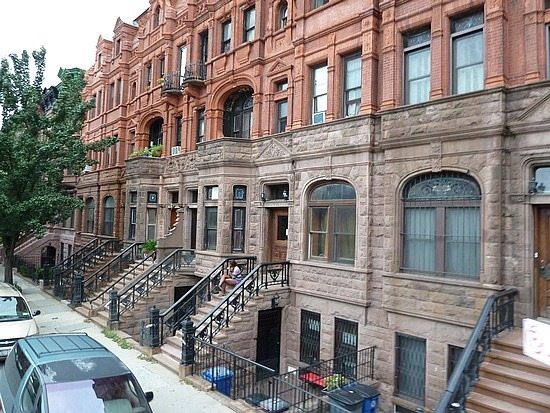
THE GENTRIFICATION OF HARLEM
Harlem, New York has always been known as the Mecca of Black America. But now that is changing.
Since the 1920s, Harlem has been THE place where blacks mixed and mingled on historic 125th Street, took in some of the world’s best music at the Apollo Theater, dined on soul food at Sylvia’s on Lenox Ave., and basically knew all their neighbors and communicated with them over a lifetime. But those days are fading.
At the height of the millennium, blacks made up the majority of Harlem’s population. But now almost a decade later, recent census data reveals that the black population has been cut by double digits, which is disturbing news to many Harlemites.
 Harlem’s rapid evolution has been driven by an economic and population shift where more affluent, non-blacks have moved into the area, replacing African-Americans who have called Harlem home for generations. For example, many white New Yorker’s made Long Island their home for decades, begrudgingly taking the 1-2 hour train ride from home to the city every day. But with some of the most glorious and affordable architecture in all of New York located in Harlem, combined with the fact that midtown Manhattan is a mere 10-15 minute subway ride away, the temptation to “overtake” the neighborhood has been far too great.
Harlem’s rapid evolution has been driven by an economic and population shift where more affluent, non-blacks have moved into the area, replacing African-Americans who have called Harlem home for generations. For example, many white New Yorker’s made Long Island their home for decades, begrudgingly taking the 1-2 hour train ride from home to the city every day. But with some of the most glorious and affordable architecture in all of New York located in Harlem, combined with the fact that midtown Manhattan is a mere 10-15 minute subway ride away, the temptation to “overtake” the neighborhood has been far too great.
In the late ’90’s, Harlem was filled with dilapidated and abandoned brownstones that the city was so desperate to make something of, they practically gave them away. A lottery was held to sell gutted brownstones for $1 dollar, provided the winner raised the value of the property up to a certain code and within a certain time frame. Brownstone winner’s were also given amazingly low interest loans so as to help them remake the old world homes. And boy did they! Many affluent non-blacks came into the neighborhood and turned these old multi-unit brownstones into single-family palatial palaces. All for dirt cheap. And with the influx of affluency in the neighborhood, it wasn’t long before businesses followed the money trail uptown. For those long term Harlem residents, who for years had to travel far outside the neighborhood just to get a prescription filled or buy a set of bed sheets, now they could walk 1 block and have everything at their disposal as if they were in midtown. It was like a dream come true.
But this change in Harlem has also come with a price. As more affluent residents continue to take over the neighborhood, Harlem is quickly becoming unaffordable. Low income residents or the elderly who have called Harlem home for all their lives, are suddenly being forced into the Bronx or other outer lying areas where rents are within reach. Or in other words, Harlem is fast becoming the “new” yuppie Upper West Side.








Great article. However, you didnt address the biggest issue and why this is happening- also happening in many other cities including New Orleans. The answer is ownership. These residents need to own and keep the homes where they have lived for so long. However that is often not the case which is why this is so easy.